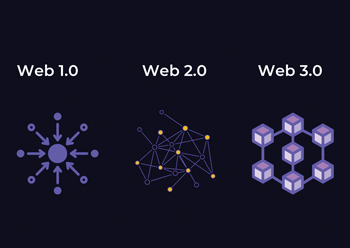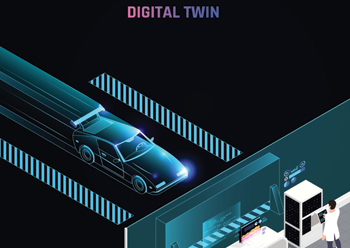
 The Mena region is booming with Web 3.0 opportunities
The Mena region is booming with Web 3.0 opportunities
As the lines between the digital and physical worlds continue to blur, we know the advent of Web 3.0 will eventually come to eliminate any boundary between the two. Put simply, Web3 is an ideal for a new iteration of the web as we know it, where ownership is distributed, access is permission less, payment is native, and third-parties are dismissed forever. This vision will come to fruition with the help of enabling technologies like ledger technology, artificial intelligence and machine learning, and augmented and virtual reality.
And if the trend we’ve seen in the last few years continues to hold, the Middle East and North Africa (Mena) region will be one of the most impacted by this transformation.
The Mena region is booming with Web 3.0 opportunities. From blockchain to crypto and digital currencies, to the newly announced Dubai Metaverse Strategy that is set to “turn Dubai into one of the world's top 10 metaverse economies as well as a global hub for the metaverse community.” Saudi Arabia, which recently appointed a new crypto chief, Mohsen AlZahrani, to “lead its virtual assets and central bank digital currency program in a sign of the Gulf state’s potential crypto ambitions” is also not shy about its ambitions of Web 3.0 world domination.
 |
|
Farbod Sadeghian |
Key players in the region believe that the Covid-19 pandemic could “catalyse Mena CEOs to undertake much-needed reorganisation and digitisation of organizations.” With prices of goods, transport and logistics rising significantly over the last twelve months, it is crucial that governments and executives can ensure that the potential for optimisation emerging from the pandemic years does not go to waste. As change is in the air, what will this mean in the specific? Let’s take a look at the logistics and manufacturing sector.
Thanks to an increase in economic diversification and overall globalisation, the region has witnessed an outright boom in the logistics sector. Innovative technological opportunities have strengthened supply chains and benefited the infrastructure countries like the UAE and Qatar ranking high (seventh and third, respectively) in the World Bank’s latest available Logistics Performance Index.
The use of blockchain technology lends itself to numerous and unforeseen breakthroughs in the public and public-interest sectors. Supply chains, specifically, would benefit from the transparency granted by blockchain and leverage it to foster a culture of accountability, which represents a significant competitive advantage. Fish suppliers John West, for example, traced an extra £17 million ($19.3 million) in sales back to the decision to include “codes on their tuna cans to enable a consumer to trace the product back to the fisherman,” proving that sustainability and transparency can be forces for good, and growth.
As we’ve seen throughout the Covid-19 pandemic, global supply chains were hard-hit and are still highly vulnerable. With liquidity held up in supply chains hitting a record high in 2020, the highest level in a decade, resilience needs to be the main focus in improving the whole sector. Blockchain can support these efforts by increasing instant traceability and eliminating intermediaries. This, in turn, reduces overhead and transaction costs as smart contracts automate step after step in the process while also shortening the time spent on each transaction and making it possible to identify obstacles and inconsistencies.
Blockchain also benefits the trustworthiness of supply chains: because you don’t have to put your trust in a sole institution or third party, trustless systems like the ledger actually build trust. They streamline operations by recording chronological, time-stamped, traceable information and making it available in a wholly public and decentralised setting. Additionally, they reduce security risks by providing a close-to-hack-proof system, which protects sensitive data and prevents subsequent alterations, ultimately encouraging scalability and increasing the chances of collective success.
What’s certain is that displaying incompetence or unwillingness to adapt to changing customer expectations will inevitably thwart the region’s growth and damage its reputation. On the other hand, attempting to shift from a traditional business model to a Web 3.0 one at this moment shows incredible foresight, and while it remains to be seen how the Mena region will be rewarded for its effort, it’s safe to say it will.
Naturally, there is still some way to go before the near-nascent blockchain can fully be applied to different use cases to the best of its abilities, and broader utility might still be further than we think. However, when it comes to innovation and transformation – especially one that’s poised to be as all-encompassing and in-depth as the one Web 3.0 promises – any advancement is cause for joy.
Mena executives report seeing “digital transformation as a vital investment,” and they recognise its critical role in the region as a key driver to achieve ambitions of future growth and resilience. And that is very much what we’re seeing all over the Middle East and North Africa today – countries quickly positioning themselves as industry leaders for the 3.0 world to come. So only one question remains: have you got your avatar ready for the metaverse?












